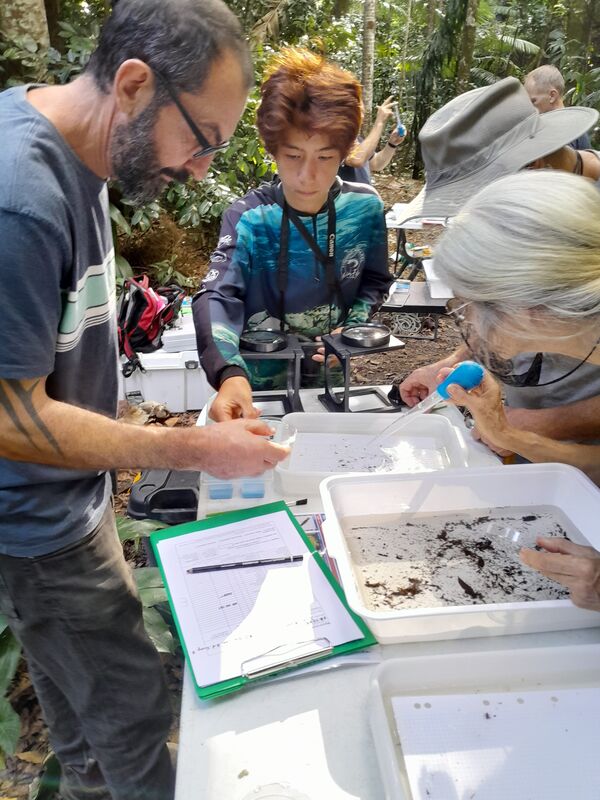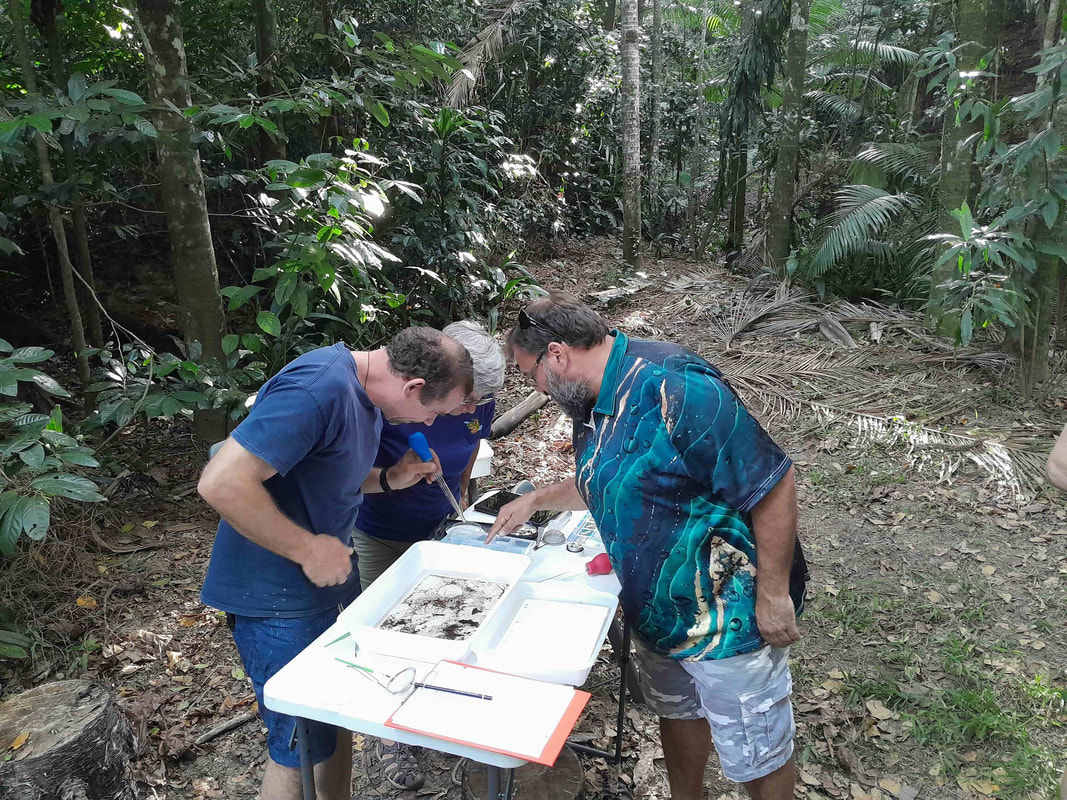What’s in the Creek?
A closer look at the aquatic world of our own endemic and critically endangered Kuranda Tree Frog using Macro invertebrate analysis of its habitat.
Waterways are crucial ecosystems, supporting a myriad of life forms and serving as vital indicators of environmental health. They are susceptible to disruption from human activities and natural events, often necessitating chemical analysis and other methods to assess their condition thoroughly. Changes in water quality can be observed through fluctuations in populations of sensitive species like frogs, making them invaluable indicators of ecosystem health. Macroinvertebrates, visible to the naked eye, are also commonly employed in aquatic environment assessments due to their varying sensitivity to water quality variables. Over time, assessing macroinvertebrate presence and abundance can yield valuable insights into water quality. While presence/absence data at the order level can provide insights, identifying taxa at lower levels like family can offer more nuanced information. This method not only serves as an educational tool but also engages the community in conservation efforts, fostering awareness of local environmental issues. Additionally, it aids in creating animal lists that can track changes over time and across different environments within and between creek catchment areas. Despite its benefits, this approach has limitations. Surveys can be affected by adverse weather, such as flooding events, and seasonal variations in species abundance. Identifying species and families accurately requires experienced personnel and specialized equipment like microscopes and reference books. Training, time availability, and safe site access are also essential considerations.
|
|
For those interested in getting involved or seeking more information, please contact Lance Neville on 0458 113 180 or email [email protected] to be put onto our event calendar emails. All training is provided, as is all necessary gear. Kids are very welcome.
|
|
|


